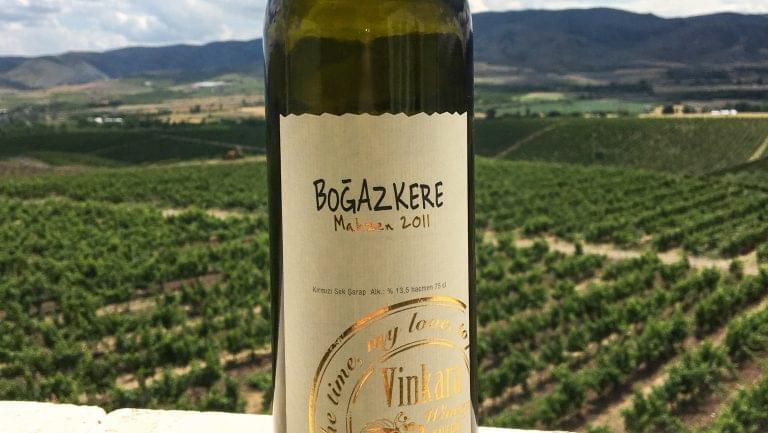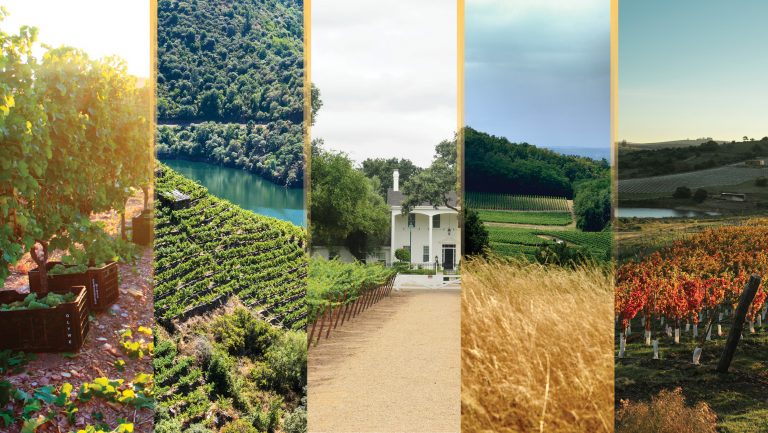Bridging eastern Europe and western Asia, Turkey is one of the world’s oldest wine countries. Local legend holds that Noah’s ark ran aground on Mount Ararat and that on those hillsides he planted the first vines after the flood. Although there’s no evidence for Noah’s winemaking, there is archaeological evidence that wine has been produced in Turkey for well over 7,000 years.
Its long wine history has given Turkey a diverse gene pool of grapes, with more than 600 indigenous varieties. Since the beginning of the 14th century and during most of the Ottoman Empire, Turkey maintained a strong wine trade and was a major exporter to its colonies. However, with the fall of the empire at the end of World War I, Turkey became politically unstable for much of the 20th century, disrupting its wine industry. It wasn’t until the 1980s, with the liberalization of the Turkish economy, that the industry began to recover and modernize.

Don’t miss the latest drinks industry news and insights. Sign up for our award-winning newsletters and get insider intel, resources, and trends delivered to your inbox every week.
Turkey has a huge amount of land under vine—502,000 hectares, 10 percent more than the U.S.—but the vast majority of those vineyards produce table grapes. Turkey’s annual wine production comprises approximately 615,000 hectoliters, compared with 23 million hectoliters in the U.S., and just 5 percent of that is exported. In the last two decades, though, a growing number of premium producers have been trying to change that by placing an increased emphasis on exports.

“Since the 2000s, a number of very notable boutique wineries have been making their mark in the industry,” says Lillian Lai, the vice president of House of Burgundy, a fine-wine importer in New York City that added Turkish wine to its international portfolio in 1995 and today carries 60 Turkish labels. “When we started, the distribution of Turkish wines was limited to ethnic restaurants, but today we import 15,000 cases of Turkish wines annually and cover 21 states in the general market.”
Just over ten years ago, Taner Öğütoğlu founded Wines of Turkey, a Turkish wine trade organization, and Gustobar, an events company in Istanbul that brings international journalists to Turkey and helps local wineries export. He says that in the last decade there has been “substantial growth in interest in Turkish wines, especially in the U.S., U.K., Europe, Australia, and Southeast Asia.” Lai adds that at the moment, consumers are eager to discover new indigenous grapes. “And I think the interest in Turkish wine will continue to grow,” she says. “It’s high time that wine enthusiasts discover the bold personalities and pleasure Turkish wines offer.”

Chief Wine Regions in Turkey
There is no official appellation system in Turkey, so many in the industry simply identify wine production areas by zones—the Aegean Coast, Marmara, and Anatolia.
Aegean Coast
Boasting more than half of Turkey’s wine production, the Aegean Coast zone in the country’s western reaches has a moderate Mediterranean climate, although inland, areas of higher altitude—up to 800 meters—become more continental. A diverse range of native varieties are grown, but international grapes, like Cabernet Sauvignon, Syrah, and Merlot, are also planted in the Aegean Coast’s vineyards. “Western Turkey,” says Lai, “is great for international wines that are rich in fruit character without being overly jammy.”
Marmara
The Marmara region is the other chief wine area in Turkey, home to more than a third of Turkey’s wine producers. “I can swear on my wine cellar that it is a magical place for wine,” says Nicole Hakli, the former beverage director at Momofuku Ssäm Bar in New York City. “The air is filled with the smell of tea—linden and jasmine, which are widely planted. On three sides, you can see water—Aegean, Black Sea, and the Sea of Marmara—although the vineyards feel more continental in influence.” The coastal influence not only helps define the character of the wines but also attracts a large number of wine-imbibing tourists, making this Turkey’s most-visited wine destination.
Varying microclimates allow producers here to make wines ranging from bright whites to rich reds. The coolest subregion of Marmara is Kırklareli, whose vineyards are planted at higher altitudes. Some of Turkey’s most traditional viticulture is located on the windy island of Bozcaada, where bush vines are common.
Anatolia
Anatolia is a large region that can be divided into central, eastern, and southeastern zones. In central Anatolia, vineyards are concentrated either along the Kızılırmak River, which moderates the otherwise challenging continental climate, or at elevations up to 1,500 meters on the volcanic soils of Cappadocia. The riverside vineyards are best known for soft and fresh red wines, while Cappadocia is better known for its whites.
Vineyards in eastern Anatolia are also planted along the Euphrates river, although the altitude is markedly higher, hovering around 1,000 meters above sea level. With hot summers and cold winters, this region has a continental climate that’s best known for producing good-quality Öküzgözü, a medium-bodied, fruit-forward red wine with fresh acidity. The lower elevation in southeastern Anatolia features a warmer climate with hot summers, and the better vineyard sites are generally found on hillsides.
Key Grape Varieties in Turkey
A number of native Turkish varieties are gaining recognition, including the Aegean grape Çalkarası, used to make rosé; rich, full-bodied Karalahna; and fresh, orchard-fruited Emir. Here are three additional varieties to become acquainted with.
Karasakiz
Native to Turkey, although also found in Greece, where it is known as Kuntra, Karasakiz is a light-bodied red variety. “The [variety] is light and fruitful,” says Hakli, “with great acidity from the high mountain of Kaz Dağları, near the ancient ruins of Troy, which is an epic place to have grapes.” Hakli poured the Pasaeli Karasakiz by the glass at Momofuku Ssäm Bar and says that “guests were positively responsive about this refreshing red paired with rich Asian cuisine.”
Narince
This native white variety is mainly found in Anatolia. Its stone fruit, citrus, and blossom aromas prompt Öğütoğlu to describe it as having “a similar profile to Chardonnay, with a slightly lighter density.” Hakli is also a fan. “Narince is easily my favorite native white variety,” she says. “An unoaked version can be crisp and saline, almost like Chablis.”

Boğazkere
The name of this highly tannic red variety that’s found mainly in southeastern Anatolia translates in English as “throat burner.” “For those looking for more complexity and old-vine character,” says Lai, “try premium expressions of Boğazkere, which benefit from some bottle aging. Because of their tannic character, the Boğazkere berries age gracefully, much like Burgundy or Barolo.”

Dispatch
Sign up for our award-winning newsletter
Don’t miss the latest drinks industry news and insights—delivered to your inbox every week.
Amanda Barnes is a British wine writer who since 2009 has been based in South America, where she specializes in the wines and regions of Argentina, Chile, Brazil, and Uruguay and writes the South America Wine Guide. Ever footloose, she is currently on a mission to travel Around the World in 80 Harvests.







